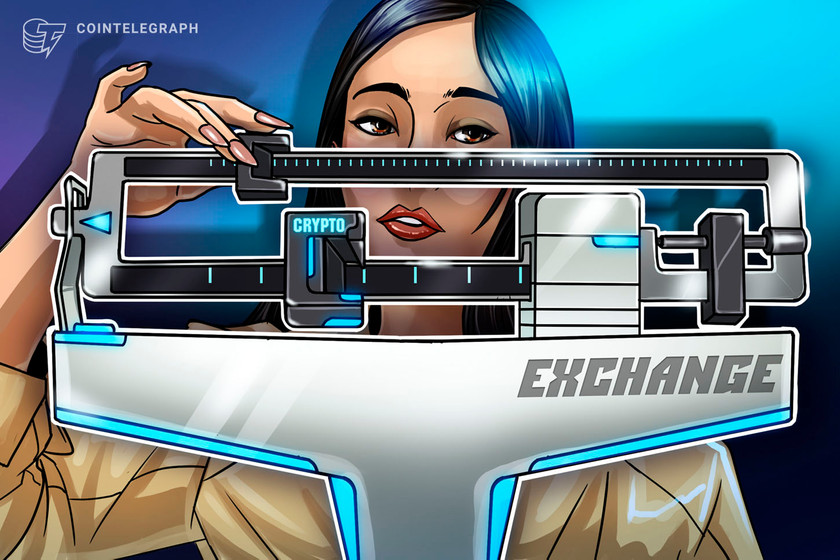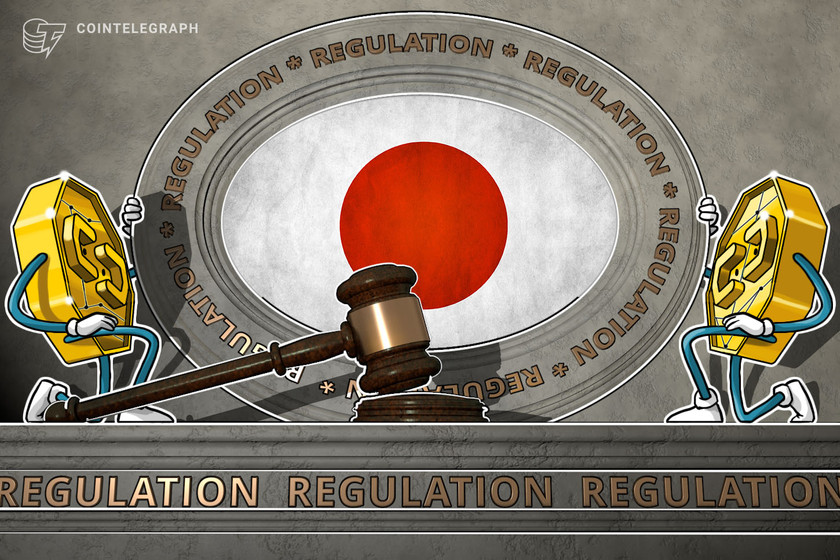Peer-to-peer crypto exchanges struggle to navigate shifting legal landscape


Two major P2P platforms announced their closure in the first quarter of 2023. Many blame it on growing regulatory scrutiny, but experts call for better alternatives.
A peer-to-peer (P2P) cryptocurrency exchange is an online marketplace that connects buyers and sellers of cryptocurrencies like Bitcoin (BTC). The platform enables them to conduct direct business with one another without the need for intermediaries.
When purchasing cryptocurrency on a P2P exchange, a buyer transfers the agreed-upon amount from their account to the seller. The payment is not made between a consumer and a money services company but between two distinct customers.
P2P exchanges were once the lifeline of the crypto ecosystem, owing to the ease of exchange and privacy features that these platforms offered. However, in 2023, some of these key features have driven them to fall under increased scrutiny from regulators.
On Feb. 9, 2023, Finland-based P2P exchange platform LocalBitcoins announced it was closing after 10 years in service. The platform cited tough market conditions owing to the ongoing crypto winter, along with increasing regulatory pressure and declining market share.
The abrupt closure of one of the oldest P2P Bitcoin trading platforms came within weeks of the United States Financial Crimes Enforcement Network (FinCEN) naming the platform as one of the largest Bitcoin counterparties to the Russian-affiliated exchange Bitzlato.
Bitzlato was the target of a significant enforcement action by U.S. officials who accused the platform of violating of Anti-Money Laundering rules and aiding in the evasion of Russian sanctions.
Another prominent P2P Bitcoin exchange platform Paxful, founded in 2015, suspended operations on April 4. The platform cited the ongoing regulatory environment and staff departures as the reason behind its closure. In a Twitter space, CEO Ray Youssef dwelled more on their decision and said even though American regulators have done a lot of catching up in the past five years, they “still don’t get it. They grow more suspicious every day.”
An update from @paxful pic.twitter.com/X3eN5OcKrT
— Paxful (@paxful) April 10, 2023
The ongoing court battle between Artur Schaback and Youssef over the control of the firm was also seen as a prominent reason behind its downfall. According to court filings, the two co-founders are currently at loggerheads over who will manage the business and have made a number of charges against one another. The accusations include, among other things, the theft of corporate finances, money laundering and circumvention of U.S. sanctions on Russia.
In an interview with Cointelegraph, both Schaback and Youssef continued their blame game and pointed fingers at the other person. Youssef claimed his co-founder’s legal tactics “bordered on terrorism” and cost Paxful many employees and directors. On the other hand, Schaback said Youssef took unilateral action to shut down Paxful on April 4, and he had no say in the day-to-day operations of the company for almost 18 months.
Recent: Crypto in Europe: Economist breaks down MiCA and future of stablecoins
Richard Mico, chief legal officer of global on- and off-ramp crypto platform Banxa, told Cointelegraph that the breakdown of relationships between the co-founders resulting in litigation could be one of many reasons behind the downfall of Paxful. He added that the ever-evolving regulatory scrutiny in the U.S. had made it difficult for the decentralized crypto platforms and P2P exchanges to thrive:
“Paxful has faced regulatory scrutiny in the past over claims of money laundering and fraud on its platform. In May of 2021, the New York State Department of Financial Services (NYDFS) ordered Paxful to bolster its KYC/AML processes. It is very possible that Paxful is fearful of future ongoing investigations and remediations,” Micro told Cointelegraph.
He said that, aside from concerns over shifting regulatory requirements, market conditions are driving significant consolidation in space. However, he is hopeful that “more transparent regulation in the U.S. will enable both P2P and other exchanges to flourish in a manner that strikes the appropriate balance between consumer protection and innovation.”
P2P shutdowns impact emerging economies the most
P2P platforms have been instrumental in flourishing crypto adoption especially in developing nations and offering banking services to the unbanked. Paxful was a pioneer of crypto adoption in Nigeria, and its shutdown hit many users in the country hard.
Freelancers often used the platform to convert their wages to and from Bitcoin and make payments to each other, while traders made use of its escrow service to conduct business. As such, the closure has left many of these users in Nigeria wondering about the future of the domestic crypto marketplace.
The Indian government imposed a banking ban on crypto exchanges in 2019 cutting all banking facilities to such exchanges. However, WazirX, one of the early crypto exchanges in India, introduced its P2P platform to ensure people were still able to trade their assets. Indian crypto traders turned to P2P platforms again in 2021 after the government imposed a hefty 30% tax on crypto transactions.
Former WazirX CEO Nischal Shetty seemed more optimistic about the future of P2P platforms, particularly in the developing world. He told Cointelegraph that P2P platforms with proper Know Your Customer protocols “help onboard users, especially in developing countries without banking access, and will continue to exist.”
Nick Saponaro, CEO of decentralized payment platform provider Divi Labs, told Cointelegraph that the closures will be painful for unbanked and underbanked traders, hindering their ability to transact locally and globally.
“Countries like Malawi, where citizens are well-capitalized but have restrictive banking practices that only allow customers to withdraw a few USD daily — P2P exchanges are necessary for those individuals to interact with the global financial infrastructure,” he explained.
Ben Jorgensen, co-founder and CEO of Web3 interoperability platform Constellation Network, told Cointelegraph that the closure of P2P platforms is, unfortunately, a massive blow to developing nations, but most likely, these developing nations will see more and more native P2P exchanges crop up.
The rise of better alternatives to P2P
The declining popularity of P2P platforms and the recent closure of some of the oldest P2P platforms are also attributed to the new availability of better alternatives, as there are now more practical on-ramps that enable users to buy cryptocurrency using their bank accounts and credit cards.
The costs of doing business are also important. For example, exchanges like Coinbase spend millions of dollars just to comply with local regulations. The unbanked communities throughout the world stand to gain the most from P2P exchanges, but given the growing regulatory compliance requirements, it is unlikely that they will produce the volumes required to support them on a large scale.
Saponaro told Cointelegraph that the only way new and existing P2P exchanges will survive is as ancillary services offered by licensed operators:
“For example, Binance has a P2P platform; however, the business model is not profitable enough to be the sole revenue stream in a fully regulated environment.”
Marc Taverner, a founding member of Swiss-regulated crypto and fiat on-ramp platform Xerof, told Cointelegraph that users often switch from P2P platforms to other trusted solutions because they need to minimize counterparty risk. Users are naturally migrating to providers that can address these risks:
“We are seeing increasing demand for trusted, transparent and compliant solutions, and it will be operators with licenses from established and respected jurisdictions who will onboard most of these users. P2P markets will still exist. The long-term question just remains how they will cope with heightened regulatory requirements,” he said.
Recent: Why join a blockchain gaming guild? Fun, profit and create better games
Jorgensen said that P2P platforms will continue to evolve just like decentralized exchanges and explained, “Although DEXs [decentralized exchanges] are technically peer-to-peer exchanges, they are catered more to a trustless state with much better fees. In terms of regulation now and in the foreseeable future, cash-to-crypto and crypto-to-cash will likely end up where most if not all regulation will be enacted. Think about it. It makes sense that when entering and exiting crypto, like when you are entering and exiting stocks in trade, these cash-in and cash-out points are documented […] Ultimately governments want to tax these transactions, and this approach is the least complicated way to do so.”
The shutdown of major P2P platforms in 2023 has become a sign of evolving regulations, especially in the United States. However, experts believe that P2P platforms will still play a key role in developing nations, and these nations will move toward launching their native platforms to overcome the closure of popular global platforms.



















